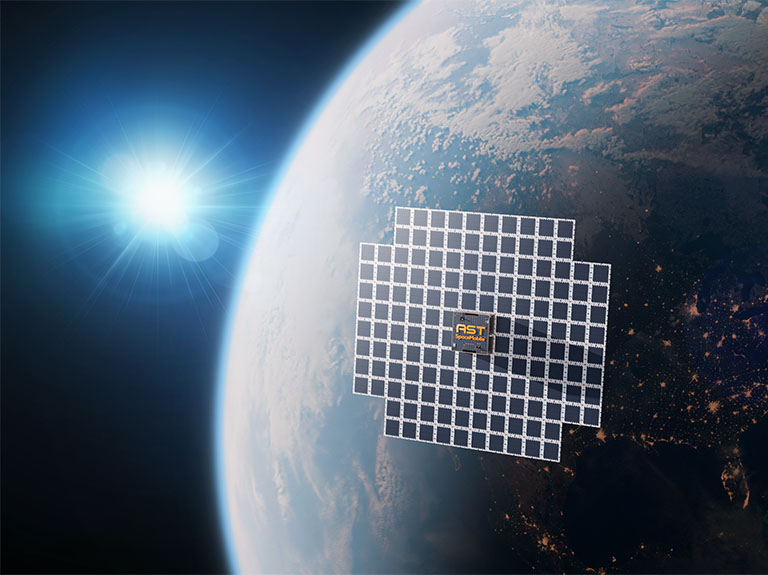AT&T Brings Cellular Connectivity Through IoT Innovations
Download release (PDF)
AT&T Laying Groundwork for Projected Ramp in IoT Deployments
Blues Wireless Device Enabled by AT&T to Seamlessly Connect IoT Devices Globally is Now Available from AT&T
What’s the news? AT&T* is bringing to market a solution that can accelerate and streamline massive deployments of Internet of Things (IoT) devices and applications globally for enterprise and government customers through cellular connectivity. Notecard™, by Blues Wireless, allows just about any asset to be connected to the cloud with carrier-grade security. The solution takes away significant complexity and cost through pre-paid connectivity and allows solution integrators and product builders to accelerate time to market and scale.
Why is this important? The global market intelligence firm IDC estimates that by 2025, the overall number of connected Internet of Things devices worldwide will reach almost 40 billion, an increase from 31.1 billion in 2020.1
The need is clear for businesses to take full advantage of the potential of IoT innovation, become more efficient, reduce their environmental impact, and scale their operations. Commercial appliances like washing machines, dishwashers, and beverage dispensers, as well as construction rigs, refrigeration equipment, and containers are all envisioned to be coming off the assembly lines fully equipped for connectivity. To date, the development, scaling and adoption has been low due to the complexity of scaled operations due to management and operational constraints when relying on Wi-Fi for connectivity. Cellular connectivity overcomes these challenges, making it the best option available for remote monitoring, control, and tracking use cases.
What’s the solution? Notecard was developed by Blues Wireless, founded in 2019 by Ray Ozzie, former CTO and Chief Software Architect at Microsoft. Notecard is a System-on-Module (SOM) that enables connections using just two lines of code. The solution enables developers of a broad range of commercial and industrial products to embed highly secure prepaid global connectivity through AT&T’s LTE-M and NB-IoT Low-Power Wide-Area (LPWA) networks designed for IoT applications, without the complexity of Wi-Fi connections. Data is routed to cloud providers or application end points of customers choosing. Notecard makes it easy to manage devices, connectivity, and data remotely, empowering the manufacturer to better understand how their assets are used in the field, and open new revenue streams for services like proactive maintenance and usage-based pricing models. The simplicity of Notecard enables rapid scaling for businesses to move from prototypes to full deployments. Notecard just works – right out of the box.
Who can use this? The automotive, healthcare, industrial, manufacturing, supply chain, transportation, or just about any industry. Notecard enables cellular connections for applications requiring longer battery life, improved coverage and lower costs that are enabled by AT&T’s Low-Power Wide-Area networks, in addition to traditional 4G LTE networks. These include wearables, asset tracking, home appliances and utility meters. Notecard is suited for low, to medium data rate transmissions.
Where is this available? Notecard is available in the AT&T IoT Marketplace here.
What are people saying?
“AT&T is a recognized leader in the IoT solutions space with significant and growing deployments with customers in many verticals. They have been a great collaborator with our innovative business model of cost-effective embedded cellular solutions for mass developer adoption,” said Mobeen Khan, Chief Operating Officer of Blues Wireless. “We are working with them to bring this game-changing solution to AT&T enterprise and government customers and accelerate adoption of IoT network services with thousands of customers across the globe.”
“Businesses increasingly recognize the potential for IoT technology to materially improve their operations, create entirely new revenue streams, reduce their environmental footprint and realize the efficiencies of scale,” said William Stovall, vice president, Mobility, IoT and 5G, AT&T. “Notecard, as an all-in-one solution, will help unlock the potential of IoT and accelerate customer adoption.”
“Internet of Things deployments require hardware, software, and wired or wireless connectivity, and most require some level of services to implement,” said Sandra Wendelken, senior research analyst, mobile services and software at IDC. “The reality is that IoT at the enterprise scale is still complex. Notecard, with embedded AT&T cellular connectivity, can help companies manage expenses by including data costs in up-front device pricing and simplifying the connection process.”
Safecast recently released Airnote, an air quality sensor using the Notecard for cellular data transmission. “At Safecast.org we are dedicated to providing open data about our environment to the global community. Collecting air quality data has been costly and cumbersome through dedicated cabling and internet access. Notecard, with embedded AT&T’s connectivity, has changed all that. It makes our Airnote affordable, takes just a few minutes to install and will help us measure our environment through our global network of volunteers,” said Pieter Franken, Co-founder and Japan Director of Safecast.
1 IDC, Worldwide Global DataSphere IoT Device and Data Forecast, 2021–2025, Doc # US48087621, July 2021



